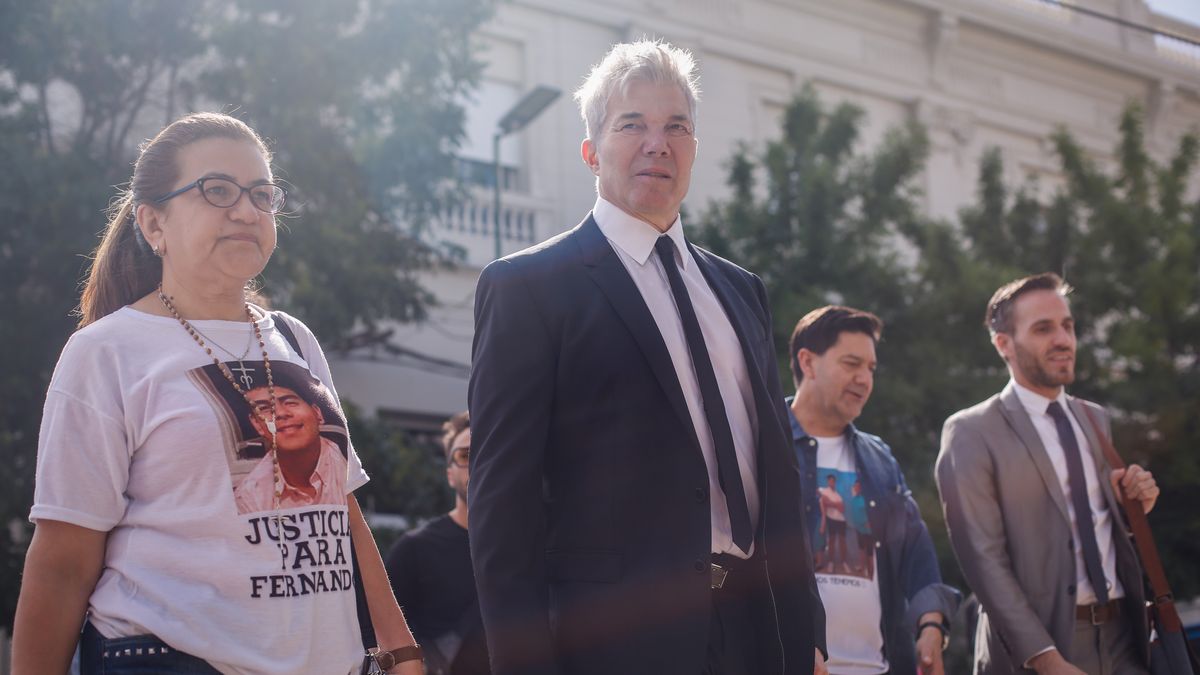The prosecutor indicated that the eight defendants distributed their roles as follows:
– They attacked Fernando: Máximo Pablo Thomsen, Ciro Pertossi, Enzo Comellli, Matías Franco Benicelli and Blas Cinalli.
– They prevented third parties from defending Fernando: Ayrton Michael Viollaz, Lucas Fidel Pertossi and Luciano Pertossi.
brique.PNG
The prosecutor described the fact, mainly, as doubly aggravated homicide by treachery and with the premeditated participation of two or more people (later I will indicate the most relevant data of these criminal qualifications).
Version of the defendants:
-Luciano Pertossi: would have stated during the oral debate, upon seeing the images of the events at the crime scene: that he was not there.
– Maximum Pablo Thomsen: As reported, he stated: who never thought of killing someone. That they hit him with a pineapple and a kick, for which He reacted by hitting one, two or three kicks. Which was the blink of an eye. That she apologized.
– Cyrus Pertossi: would have explained: That he did not kick. That when he saw the boy (by Báez Sosa) on the floor he stopped the kick.
In this way, we are faced with different versions of the facts (accusation vs. defendant) that could be subsumed in different legal classifications with sentences ranging from life imprisonment to 1 or 3 years in prison.
Let’s see.
What are the possible applicable legal qualifications?
In the case of determining that all had homicidal intentcould be classified as:
– 8 to 25 years.
– Art. 79, Penal Code.
– Key to this rating: they wanted to kill and they killed.
- b) Homicide aggravated by treachery
– Life sentence.
– Art. 80, inc. 2, Penal Code.
– Key to this aggravating circumstance: the defenselessness of the victim, that is, he was hit from behind and the perpetrators acted without risk.
- c) Aggravated homicide by premeditation
– Life sentence.
– Art. 80, inc. 6, Penal Code.
– Key to this aggravating circumstance: premeditation, that is, they all agreed that they were going to kill at that moment and in that way (eg: 5 attacking and 3 fencing).
- In the case of determining that they had no homicidal intentcould be classified as:
- a) Homicide in a fight or assault
– 2 to 6 years in prison
– Art. 95, Penal Code.
– Key to this rating: violence or physical aggression (of several) on the victim, but it is not known who of them killed him. They did not agree to kill. There was no premeditation.
- b) Preterintentional homicide
– 1 to 3 prison
– Art. 81, inc. 1 B
– Key to this rating: the author’s intention was to hit to cause damage, but not to kill.
Does the state have to prove guilt?
The answer is affirmative, since any defendant enjoys the presumption of innocence until proven otherwise with certainty of guilt and, therefore, is convicted by final sentence.
Therefore, the defendant is not the one who must prove his innocence and the State must prove his guilt.
The state must prove concrete actions with criminal consequences.
When making a decision, the Tribunal must base its decision on the evidence discussed during the oral debate. If certainty about the facts emerges from them, they must condemn and if, on the contrary, there is a reasonable doubt that prevents demolishing the state of innocence, they must acquit.
Source: Ambito
David William is a talented author who has made a name for himself in the world of writing. He is a professional author who writes on a wide range of topics, from general interest to opinion news. David is currently working as a writer at 24 hours worlds where he brings his unique perspective and in-depth research to his articles, making them both informative and engaging.




